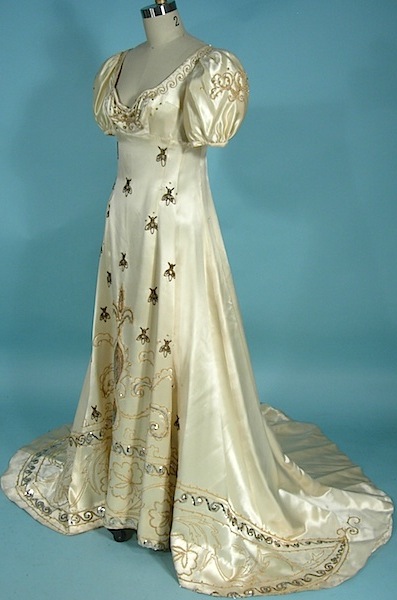In each of these newsletters I talk about some aspects of the Regency World – a time so different from now, with unique words, items, behaviours and beliefs. A time when England was still the holder of a massive global empire, but when change was accelerating, with the impacts of the Napoleonic wars, the introduction of railways, and the beginnings of the industrial revolution.
It was a time when the privileged nobility lived in a glittering world of wealth,
and the poor were very poor indeed.
Whilst my books are unashamedly about romance and happy endings, the more
I write about the period, the more fascinated I become by the complexity of society then, and the contradictions that people faced in everyday life. With these trivia pieces I want to show you just a few of those fascinating details.
Clothing –
In the early 1800s, whilst the making of fabric was already starting to be industrialised, with huge cotton mills and weaving shops with semi-automated looms, the making of clothing was still completely by hand. If you have ever tried to hand sew a garment, you will have some idea of just how challenging it is, to sew neatly and precisely, and to produce a garment that sits properly and looks good.
Imagine then, the task of creating one of those spectacular ball gowns, complete with beading and lace decoration, all by hand! Add to that the amazing fact that, quite often, the dresses of the nobility were created in only one or two days……… The modistes who owned the shops that created gowns for the nobility, and the seamstresses who worked for them, were able to hand sew such remarkable pieces with incredible precision and speed, and adapt their designs as they went, to suit each lady (There were no conveniently purchasable sewing patterns then). Every single garment was uniquely created for the noble lady who ordered it, exactly tailored to her shape. So precise was the fitting, that at times a lady needed to be pinned or sewn into her dress, to ensure that everything sat exactly in place as designed (there were no convenient zippers then!).
It was not uncommon for women who worked as seamstresses to go blind at an early age, as a result of sewing for long hours, with only candlelight to work by.
There were, however, second hand dress shops, where the cast off dresses of the nobility and the wealthy merchant classes might find their way. Poorer women would buy those dresses, and hand alter them to fit, as best they could. Imagine yourself in such a situation – what would you wear?
(Image courtesy of https://www.antiquedress.com/item7405.htm – a wonderful site where you can buy antique and reproduction clothing, which is truly spectacular!)

Leave a Reply